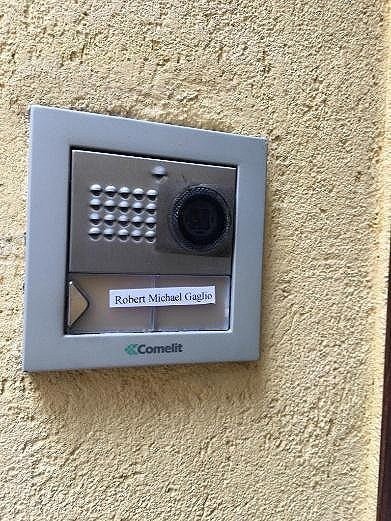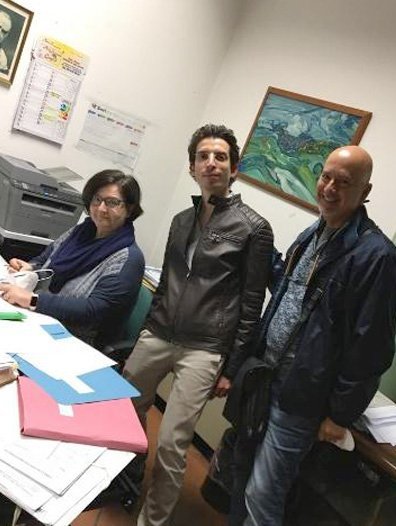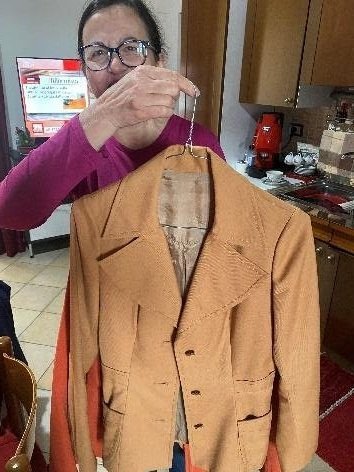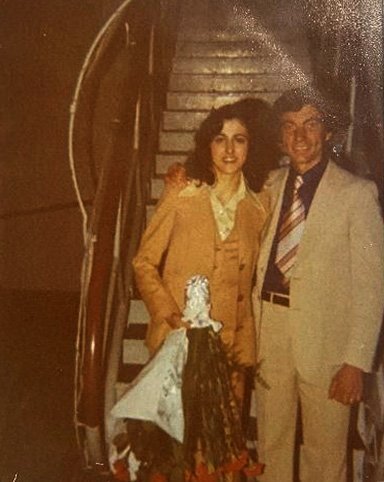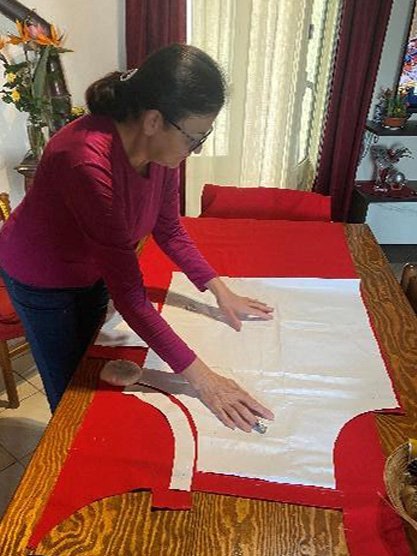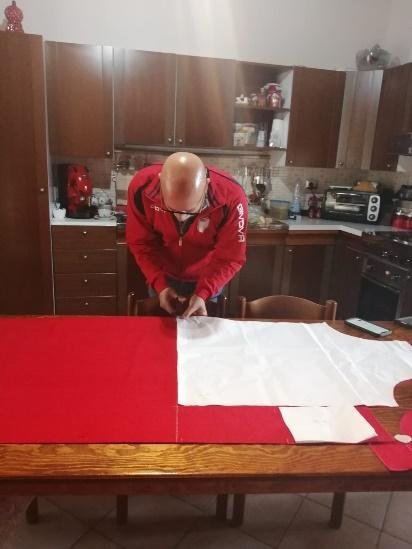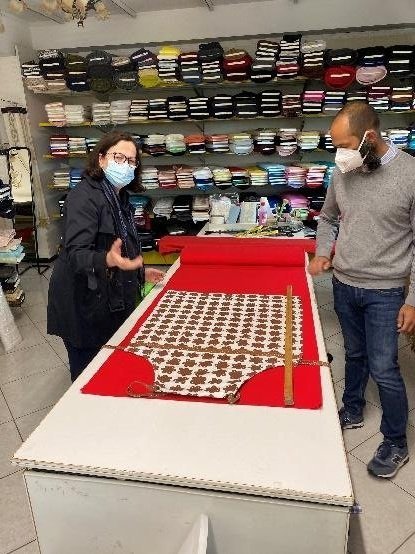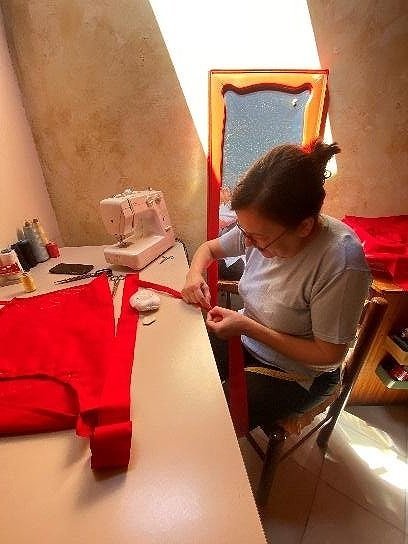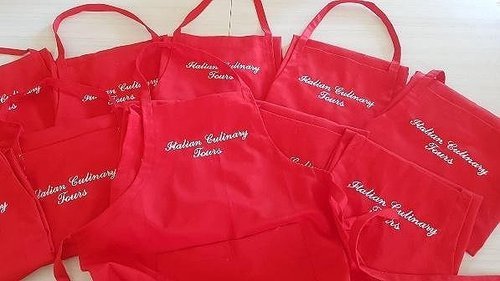Maria
After getting through all the disappointments of the pandemic, returning to Sicily this year was very special for me. I finally had the opportunity to finalize my request for Italian citizenship along with keeping my American one. As an Italian immigrant, I have the birthright to be an Italian citizen because of when my ancestors nationalized. In my case, my grandfather came to the U.S. in 1912, then became nationalized much later in 1932. My father was born in 1925 when his father was still considered an Italian citizen, so he received the right to be a citizen and passed that right on to my siblings and me. It is interesting that my uncle, my dad’s younger brother, does not qualify to be an Italian citizen nor do his children, because he was born in 1934 after his father’s U.S. nationalization took place.
The citizenship process can be done two ways, by applying in the U.S. through a consulate depending on where you live or by becoming a resident of Italy and applying in the town which you reside. In my case, I decided to live and apply in my grandparent’s hometown, Montelepre, Sicily. For me, getting my citizenship in the town where both my grandparents were born made this process so much more meaningful. There are so many Gaglios in Montelepre and nearby towns that you can’t walk down the street without seeing one. In fact, the woman at the town hall who received my application, Crocetta, has Gaglio as her last name. I have never come across my name in other parts of Italy, but in my town, we are plentiful!
While living in Montelepre this spring, I wanted to get to know the people in this small mountain town of about 5,000 residents. One of those folks is Maria, my dad’s second cousin. This beautiful woman overflows with the love she shares with her family and community. Through the years she cooked countless meals for me, always welcomed me for colazione (breakfast), and laughed when I showed her how to make eggs over easy. For Italians, the idea of eating eggs for breakfast is a bit odd. Another oddity is serving me decaffeinated coffee. An Italian would wonder, “What’s the point of drinking coffee if it doesn’t have caffeine in it?” But Maria always has it on hand for me, nonetheless. When I leave her house after a visit, she always packs a care package filled with whatever is in season or something sweet. I just love my visits with Maria and her family, which includes the little rascal dog, Miya, who always barks at me from the balcony when I arrive.
I wanted to learn more about Maria’s life, so knowing she had a career as a tailor, I came up with the idea of making aprons together which I could then use during our cooking classes with our guests during their villa stays. I learned that at age 18, Maria graduated from a trade school learning her vocation and then spent a few years as an apprentice tailor. After this process of education and experience, she then had a career working from her studio at home to make slacks and other garments for clients in the community. She still has her studio in the loft of her home where her diploma conspicuously hangs on the wall.
There is a mixture of natural and artificial lighting to help her see her work better, and her sewing machine sits under the window in the corner of the loft for extra lighting. She has all her tools and supplies handy to work and create anything from dresses, slacks, and jackets, etc. She shared with me photos of her graduation, various garments she made in the past, and even a jacket she made for herself over 25 years ago. The jacket is a special memento dating back to when her husband, Pino, and she were just married. Sadly, Pino passed away in 2014, shortly after I met him. Maria has had her unfair share of losses.
I remember asking a series of questions about the last days of our cousin Luciana’s life, who I was very close with. We were both using Google Translate back and forth, my asking questions and Maria answering with the details of the times she helped take care of Luciana near the end. It was hard holding back the tears. She also lost her son who was survived by his wife and her two young grandchildren. It seems so unfair that this kind, generous, and loving woman had to endure so much pain.
To make the grembiuli (aprons), the first task at hand was to buy the material. I showed Maria photos of the ones I have back in the U.S. so we could try to duplicate them. We came down the mountain to try our luck at a store in Partinico, a town nearby along the highway to avoid having to go to the congested city of Palermo. The store she suggested had the right material. Maria brought an apron from home to lay out on the material so she and the clerk could determine just how much would be needed to make ten aprons. The following day Maria made a paper pattern and we cut out the pieces together. As a result of her skills, she was able to lay out the patterns in a way that yielded 12 aprons, not ten. I helped by using the material chalk to outline the patterns, then used the scissors to carefully cut around the chalk lines. Holding those scissors, I wondered how many times they must have been used throughout Maria’s career.
Returning to her house a few days later, Maria had already made a prototype and wanted me to show her how far down the apron to place the pockets. We then went up to the loft and I tried to do my best to be helpful. She had me pin the edges of the pocket material and she then sewed them onto the apron with the machine. I can’t express in words what it feels like to experience such a simple thing like making aprons with a cousin I had no idea existed just ten years ago. It’s been such a blessing to have been given the time to get to know many of my cousins in Sicily, especially Maria and her sister Vita.
Time was running out since I had to leave for Rome to start a tour of the Amalfi Coast and then the Dolomites tour. But when I returned, all 12 aprons were finished, and Maria found a local vendor to embroider my company name on them. They were ready for my next tour in Tuscany that would take place later that month.
It was a family of six guests that Chef Sandra and I instructed how to make lasagna with fresh pasta and the group looked so wonderful in the new, matching aprons. It was an experience of love, first making the aprons with Maria and then having my guests use them while sharing the experience of cooking together.
As long as I’m on this earth and in Montelepre, I will always visit Maria for decaffeinated coffee, colazione, and her loving heart. I feel so special to be the recipient of such love. She has been a true gift along this journey to reconnect what was lost in 1912 when my grandfather left Sicily.
Blog Posts

